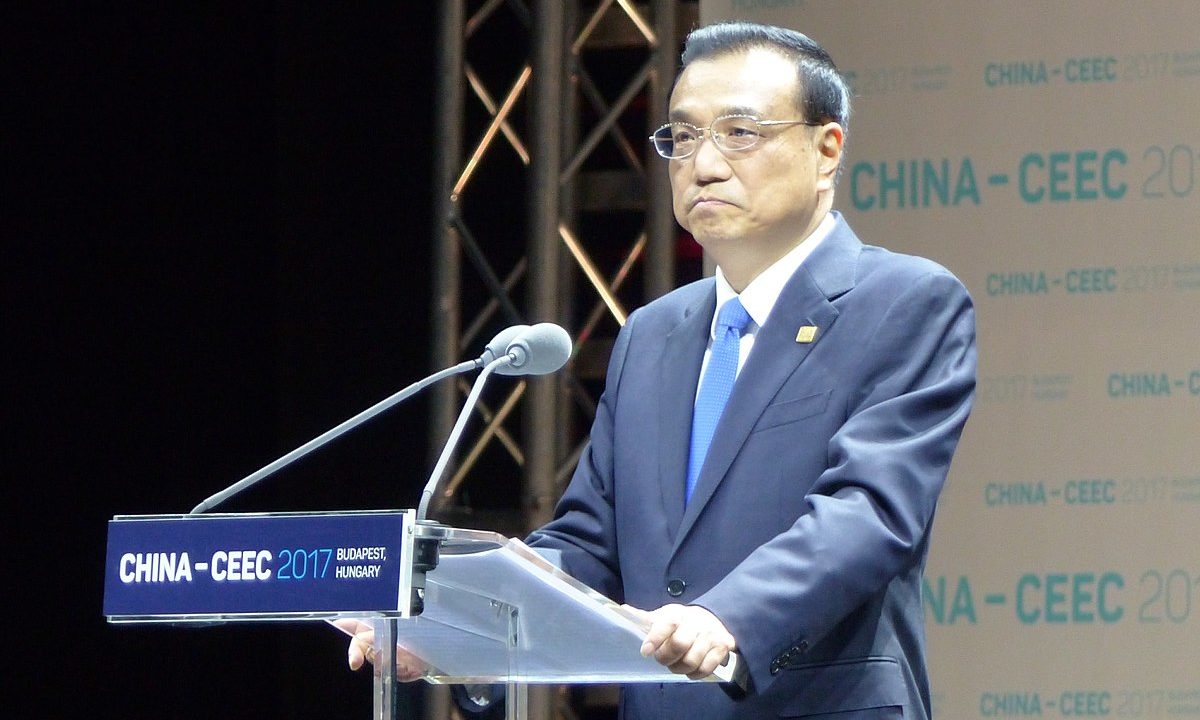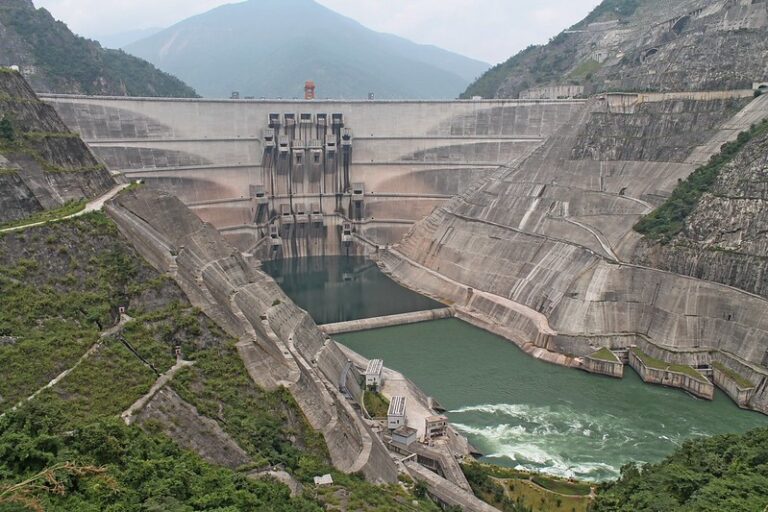What Does China Think about Central and Eastern Europe?

This year marks the tenth founding anniversary of the China-Central and Eastern European (CEE) cooperation format, known as 16/17+1. However, do not expect the anniversary to be met with fanfare – the mechanism is in a deep crisis. Apart from very blurry plans from the Chinese Foreign Ministry to host an event in Beijing to celebrate this anniversary, with almost no appetite from the CEE to attend, it seems that issuing a commemorative envelope would be the only ‘evidence’ that the format clings to life.
China’s growing assertiveness, including towards CEE, such as deploying retaliatory measures against Lithuania, and Beijing’s tacit endorsement of Russia’s invasion of Ukraine, poses a question about the future of China-CEE relations and the format itself. It is almost certain that the atmosphere around 16+1 has not improved since ambassador Huo Yuzhen’s (special envoy to CEE) trip in April and May to eight Central European countries: Czechia, Slovakia, Hungary, Croatia, Slovenia, Estonia, Latvia, Poland. The two main goals of the mission, defusing CEE’s doubts and “misunderstandings” about China’s stance on Russia, and reviving the 16+1, turned out to be vain attempts. Huo met with rather low-level officials in the visited countries, while in Warsaw the delegation was not even able to arrange a meeting at the Polish Foreign Ministry.
With the current sorry state of China-CEE cooperation in mind, it is worth examining China’s perception of CEE (based on Chinese experts’ analysis but also remarks given by officials) that underpins its approach towards the region. Has this perception undergone changes since the creation of 16+1? How does it influence China’s CEE policy? And what does it mean for the region and the future of its engagement with China?
China’s (Not So) Evolving Perception of CEE
When the 16+1 was created there were speculations about China’s rationale behind the initiative. To understand China’s motivation, it is worth recalling how Beijing perceived the region a decade ago. At that time there were mostly two main prisms.
The first one was a historical legacy of the CEE countries as the former socialist states. Chinese experts and officials argued that there was long-lasting friendship with CEE countries, as many of them established diplomatic ties with Beijing shortly after the People’s Republic came into existence in 1949. The Chinese side also highlighted that the PRC and the CEE countries knew and understood each other because of their similar experience as victims of different forms of colonialism, living under the shadow of big powers, and belonging to the socialist block during the Cold War.
The second prism was the economic agenda. CEE countries were seen in China as less developed due to the ongoing process of transformation from socialist regimes and state-led economies to democracy and free-market economy. At the time China came up with the idea of the cooperation platform with the region, Europe was still dealing with the aftermath of the global financial crisis, and Central Europe generally coped better with its aftermath than the West. The ability of the CEE countries to bounce back relatively quickly from the financial crisis made China pay more attention to this region. For Beijing, CEE was a prospective partner in terms of export markets, not only for goods but also China’s excess manufacturing, construction, and investment capacities. This was especially the case concerning the gap in infrastructural development between ‘old’ and ‘new’ EU member states, as well as between the EU and the Balkans.
Ten years have passed, with the 16+1 format experiencing ups and downs, including its enlargement and subsequent contraction. Has China changed its perception of the region based on this experience? The answer is, not that much.
For Beijing, CEE does not matter much in a global perspective. Beijing does not perceive CEE as a strong, separate, and fully independent region with which cooperation is indispensable and profitable economically and politically. This implies that China does not intend to develop the same model of relations with the region as it maintains with Western Europe. In short, CEE is still ontologically bifurcated from the West. What is the difference, then?
Although most CEE countries have integrated into the Western structures (EU and NATO ), with the region’s countries transforming from authoritarian to democratic regimes and market economies, for Chinese experts, the region has not been fully integrated with the West yet. The CEE is still perceived as a less developed and poorer region, with high demand for external assistance e.g., in upgrading infrastructure, or in digital issues, like 5G. Chinese analysts argue that CEE countries are still lagging behind Western Europe as the process of integration has not been very smooth. What is even more important, the development gap between CEE and Western Europe is rather big and continues to widen. Furthermore, CEE democracies are perceived as young and immature, despite the democratic transition.
The size of CEE countries is also a distinguishing feature of the Chinese discourse. Chinese experts often refer to CEE as small or even tiny countries and economies. It seems that this refers not only to the physical size of the states but also their political and economic ‘weight’ within Europe and the EU.
Destined for Dependence
The aforementioned features lead to the next important element in China’s perception of CEE which is the region’s dependence on external actors. In other words, CEE countries are not seen as fully independent. On the contrary, the countries are seen as under constant pressure or control of influential external powers. This subordination comes not only from the US and Western Europe but also from Russia and – to some extent – China.
When it comes to China, the best example is the very birth of the 16+1 when the so-called “12 Measures” – a Chinese economic offer for CEE – were announced. The region was not properly consulted about this offer beforehand. Later on, China’s unilateral offer to Germany (in 2018) and France (in 2021) to consider tripartite cooperation in CEE – without consulting with the region – have epitomized China’s perception of the region as an object, rather than a subject of international politics.
However, in Chinese discourse, the region depends mostly on two main groups of powers: the US and Western Europe, and Russia – a legacy of being part of a socialist bloc, but also as part of the de facto accepted notion of Russia’s sphere of influence.
Chinese experts believe that most of the EU member CEE countries follow the United States, often characterizing them with derogatory terms as US allies like pawns or vassals. Essentially any step by the CEE countries that is not in China’s interests is perceived as a result of US pressure. This is allegedly a consequence of the CEE’s strategic subjugation to the West mostly in the security domain, as the region is seriously concerned about Russia. For Chinese researchers, the best example of this structural relationship of subjugation are the CEE demands for the permanent presence of US troops in the region, which have gained urgency since the Russian invasion. What is more, since the US strategic rivalry with China intensified, the US is said to have been using CEE in its game against China. In that sense, the US is seen as the chief factor behind CEE countries’ decisions that are detrimental to China’s interests such as enhancing ties with Taiwan.
An example in case is the perception of Lithuania and its China policy. Lithuania’s decision to deepen its cooperation with Taiwan through setting up the Taiwanese Representative Office in Vilnius, and at the same time downgrading relations with China (including withdrawal from 17+1) sparked a discussion among Chinese experts about the reasons. They argue that since its independence after the Soviet Union’s disintegration, Lithuania has pursued an anti-Russia policy and a close-knit relationship with Washington, a trend which has further been reinforced since 2019. The rationale is growing concerns about Russia and hope for US assistance in case of crisis.
As one Chinese expert argues, the breakthrough moment was the publication by the Lithuanian Ministry of Security of a report in which China was defined as a security threat. It is claimed that it was done under Trump’s pressure and that this approach has continued under Biden who calls for an anti-Chinese coalition of like-minded countries. Lithuania’s decision to pull out of 17+1 was supposedly made under US pressure as well. What is more, Chinese analysts claim that Lithuania not only follows the US demands but also is attempting to anticipate Washington’s expectations. The reason is to attract US attention and play a vanguard role in Europe as an anti-Chinese and a pro-US country. This refers to providing Taiwan with vaccines – after the US announcement to do so. In the end, Chinese experts characteristically argue that this approach is Lithuania’s way to become more visible and overcome its fate of being a tiny country.
Apart from the US, CEE countries are said to be dependent on Western Europe and/or Brussels as well. This subjugation is connected with the obligations to fulfill various EU conditions and meet the criteria (economic, political, legal, etc.) to be an EU member. Also, Western EU members separately are trying to impose on CEE their own rules, norms, values, and political concepts. The recent mishaps between Brussels and several CEE due to the rule of law issues, differences when it comes to climate policy, approach to Russia, the US, etc., are seen in Beijing as evidence that the EU exerts excessive pressure on CEE counties and they finally are trying to seek more autonomy but not necessarily to leave the EU. Constant pressure from large European countries (such as France with its strategic autonomy concept) on CEE, while the region would like to strengthen its ties with the US, is seen by Chinese analysts as the reason for CEE countries’ rising distrust towards the EU. However, it is largely assessed that CEE’s desire to be less dependent on the West is reversing since Russia’s aggression against Ukraine.
Respecting Russia’s Backyard
Chinese experts suggest that several CEE countries are dependent on Russia or lie in the Russian sphere of influence. It seems that in the eyes of the Chinese analysts, this group consists mostly of non-EU and NATO members. Several Chinese analysts allude that Russia-dependent CEE countries are those under the Eastern Partnership program that includes Belarus, Ukraine, Moldavia, Georgia, Azerbaijan, and Armenia. Experts believe that the goal of this EU’s initiative is to encircle Russia and transform the post-Soviet space. The best evidence that China respects Russia’s sphere of influence is an argument that those countries play a role as the latest Russia’s strategic buffer zone. Chinese analysts claim, for example, that Western endorsement of Belarusian pro-European opposition and the decision not to recognize Lukashenka as a president after the elections in August 2020 was an effort to “swallow” Russia’s traditional “backyard”. Likewise, the recent Poland and Lithuania-Belarus border crisis was seen as Russia’s legitimate attempt to deter the process of erosion of its traditional sphere of influence.
Russian aggression against Ukraine in a nutshell epitomizes China’s stance on a CEE country that is trying to break away from Russia’s tutelage and ally with the West. Generally, in China’s official discourse (MFA readouts and pressers) about the war, Beijing refrains from mentioning Ukraine as such, as a sovereign and independent country. Instead, China talks about a Ukraine crisis, issue, situation, or a conflict. What is more, China does not explicitly voice its respect for the sovereignty, independence, and territorial integrity of Ukraine. Although such dictums are used very often, Chinese officials are talking about “all countries.” Ukraine is not being mentioned explicitly. However, often the following sentences are about “Russia’s legitimate security concerns that should be respected.” In effect, this may suggest that China is questioning the very statehood of Ukraine. Moreover, Ukraine is not presented as a victim of aggression. There are also open statements by Chinese officials that NATO and US are responsible for the situation in Ukraine due to NATO’s eastward expansion with its aim to squeeze Russian strategic space. In that sense, Russia is portrayed as the side that defends itself. Blaming the US for the war suggests that Ukraine’s desire to be part of the West is not Ukraine’s own decision. It is worth quoting here Chinese Foreign Minister Wang Yi who said during his phone call with his Ukrainian counterpart Kuleba that he “believes that the Ukrainian side has enough wisdom to make choices that conform to the fundamental interests of its own people”.
The fact that in Chinese eyes Ukraine lies in the Russian sphere of influence is being confirmed by the arguments that Ukraine and Russia are Slavic brothers with the same cultural roots. The US should have known that Ukraine is Russia’s “itchy flesh”, and if Ukraine is to be touched, Russia will inevitably react, Chinese experts argue.
The view that CEE countries are dependent on the West and Russia leads to a conclusion that the region is a kind of an intermediate zone (zhongjian didai). This is a reference to the Maoist era, when the Chinese leader coined this term that implies that less developed countries lie between the US and the Soviet Union. In short, Chinese experts accentuate that CEE is a kind of playing ground for big powers or a place for tag-of-war between them, with the CEE countries taken advantage of, to meet respective great powers’ political goals. Chinese MFA spokesperson commenting on the ongoing war in Ukraine said that small and medium-sized countries have been forcibly involved in the geopolitical game of great powers.
But China does not recognize the equal distance between US and Russia but, in a rather open way, sides with Moscow, arguing that since the end of the Cold War there is a noticeable double Western (EU and NATO) eastward expansion that resulted in narrowing Russia’s strategic space. Chinese experts explicitly say that what we are observing right now is not the war between Russia and Ukraine but a geopolitical game between the US and Russia. Recently, the Chinese vice-minister of foreign affairs Le Yucheng even remarked that the US is using Ukrainians as “cannon fodder” to wear down Russia and sacrifice Ukrainian lives to satisfy its hegemonic ambitions.
Lessons for CEE
Despite ten years of closer cooperation revolving around the 16/17+1 format, China has not significantly modified its perception of Central and Eastern Europe. The region is still seen as consisting of countries that do not speak in their own voice but follow the other powers’ demands. However, nowadays, one slight modification is noticeable – China puts more emphasis on region subjugation to big powers, than the economic dimension. It seems that the focus on those issues is a result of CEE’s discernible disillusionment with China and Beijing’s attempts to find an answer about the reasons. It appears that China came to the conclusion that the reason is big politics such as increasing tensions between the democratic West and Russia and China, rather than Beijing’s own missteps.
Such China’s perception of CEE together with concomitant Beijing’s unprecedented punitive actions against Lithuania and its growing alignment with totalitarian Russia indicate that Beijing has already become a security threat that attempts to subvert economic, security, and normative order in Europe. This should serve as a moment for CEE countries to seriously reconsider their perception of China. It is in CEE countries’ interest to create a united front with the West, especially with the US, and to persuade Western Europe to embark on real efforts to reduce Europe’s dependence on China. It is also worth strengthening ties with non-European like-minded countries that share with CEE similar concerns.
One of the Chinese experts assessing the impact of Russia’s assault on Ukraine on CEE and EU-China relations wrote that there would be a new wave of CEE westernization and that the region will be exerting more pressure on Brussels to sharpen its course on China. The CEE states should indeed take this up as their new mission, to avoid a “we-told-you-so moment” as in the case of Russia.
Written by
Justyna Szczudlik
ShilinabolanJustyna Szczudlik is the deputy head of research, a China analyst, and the former Head of Asia-Pacific Program (2016-2021) with the Polish Institute of International Affairs (PISM).


